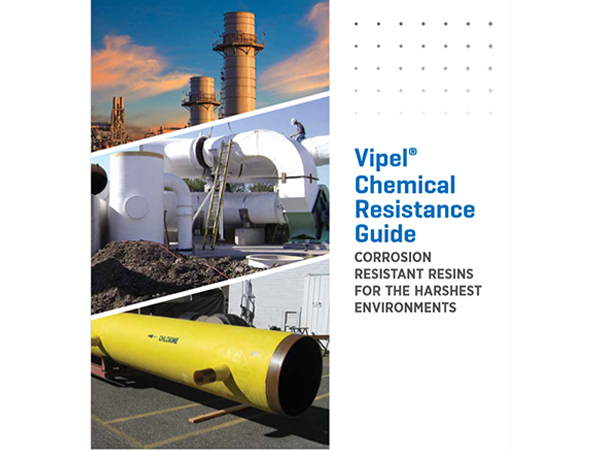
-
 Afrikaans
Afrikaans -
 Albanian
Albanian -
 Amharic
Amharic -
 Arabic
Arabic -
 Armenian
Armenian -
 Azerbaijani
Azerbaijani -
 Basque
Basque -
 Belarusian
Belarusian -
 Bengali
Bengali -
 Bosnian
Bosnian -
 Bulgarian
Bulgarian -
 Catalan
Catalan -
 Cebuano
Cebuano -
 China
China -
 China (Taiwan)
China (Taiwan) -
 Corsican
Corsican -
 Croatian
Croatian -
 Czech
Czech -
 Danish
Danish -
 Dutch
Dutch -
 English
English -
 Esperanto
Esperanto -
 Estonian
Estonian -
 Finnish
Finnish -
 French
French -
 Frisian
Frisian -
 Galician
Galician -
 Georgian
Georgian -
 German
German -
 Greek
Greek -
 Gujarati
Gujarati -
 Haitian Creole
Haitian Creole -
 hausa
hausa -
 hawaiian
hawaiian -
 Hebrew
Hebrew -
 Hindi
Hindi -
 Miao
Miao -
 Hungarian
Hungarian -
 Icelandic
Icelandic -
 igbo
igbo -
 Indonesian
Indonesian -
 irish
irish -
 Italian
Italian -
 Japanese
Japanese -
 Javanese
Javanese -
 Kannada
Kannada -
 kazakh
kazakh -
 Khmer
Khmer -
 Rwandese
Rwandese -
 Korean
Korean -
 Kurdish
Kurdish -
 Kyrgyz
Kyrgyz -
 Lao
Lao -
 Latin
Latin -
 Latvian
Latvian -
 Lithuanian
Lithuanian -
 Luxembourgish
Luxembourgish -
 Macedonian
Macedonian -
 Malgashi
Malgashi -
 Malay
Malay -
 Malayalam
Malayalam -
 Maltese
Maltese -
 Maori
Maori -
 Marathi
Marathi -
 Mongolian
Mongolian -
 Myanmar
Myanmar -
 Nepali
Nepali -
 Norwegian
Norwegian -
 Norwegian
Norwegian -
 Occitan
Occitan -
 Pashto
Pashto -
 Persian
Persian -
 Polish
Polish -
 Portuguese
Portuguese -
 Punjabi
Punjabi -
 Romanian
Romanian -
 Russian
Russian -
 Samoan
Samoan -
 Scottish Gaelic
Scottish Gaelic -
 Serbian
Serbian -
 Sesotho
Sesotho -
 Shona
Shona -
 Sindhi
Sindhi -
 Sinhala
Sinhala -
 Slovak
Slovak -
 Slovenian
Slovenian -
 Somali
Somali -
 Spanish
Spanish -
 Sundanese
Sundanese -
 Swahili
Swahili -
 Swedish
Swedish -
 Tagalog
Tagalog -
 Tajik
Tajik -
 Tamil
Tamil -
 Tatar
Tatar -
 Telugu
Telugu -
 Thai
Thai -
 Turkish
Turkish -
 Turkmen
Turkmen -
 Ukrainian
Ukrainian -
 Urdu
Urdu -
 Uighur
Uighur -
 Uzbek
Uzbek -
 Vietnamese
Vietnamese -
 Welsh
Welsh -
 Bantu
Bantu -
 Yiddish
Yiddish -
 Yoruba
Yoruba -
 Zulu
Zulu
fiberglass ducts demonstrate exceptional resistance against
The Exceptional Resistance of Fiberglass Ducts
In today’s world of increasing energy efficiency and environmental concerns, the choice of materials in construction and HVAC (Heating, Ventilation, and Air Conditioning) systems is paramount. One material that has gained significant attention in the realm of HVAC applications is fiberglass. Known for its superior resistance to various environmental factors, fiberglass ducts are proving to be a reliable choice for modern buildings. This article explores the exceptional resistance properties of fiberglass ducts and why they are increasingly favored in construction projects.
Understanding Fiberglass Ducts
Fiberglass ducts are made from a composite material that combines glass fibers and resin. This unique composition endows fiberglass with remarkable properties, making it a standout option compared to traditional materials such as metal or plastic. Fiberglass ducts come in various shapes and sizes, catering to diverse installation needs, including residential, commercial, and industrial applications.
Resistance to Corrosion
One of the most compelling reasons to use fiberglass ducts is their exceptional resistance to corrosion. Unlike metal ducts, which can rust and degrade over time due to exposure to moisture and chemicals, fiberglass remains unaffected by such conditions. This inherent resistance extends the lifecycle of HVAC systems, reduces maintenance costs, and enhances overall system efficiency. With fiberglass ducts, property owners do not need to worry about the costly replacements often associated with corroded ducts.
Thermal Insulation and Energy Efficiency
In the context of energy efficiency, fiberglass ducts showcase impressive thermal insulation properties. They help maintain consistent temperatures within the ducting system, reducing energy loss during the heating or cooling process. This not only improves the efficiency of HVAC systems but also contributes to lower energy bills. The insulating value is attributed to the structure of fiberglass, which can trap air within its fibers. As a result, fiberglass ducts help create a stable indoor climate that is both comfortable and cost-effective.
fiberglass ducts demonstrate exceptional resistance against

Resistance to Contaminants and Mold
Fiberglass ducts are not only resistant to corrosion; they also demonstrate exceptional resistance to contaminants such as mold, bacteria, and fungi. Due to their non-organic nature, fiberglass does not provide a suitable environment for these unwanted microorganisms to thrive. This property is crucial for maintaining air quality in indoor environments, particularly in settings like hospitals, schools, and offices, where clean air is paramount. Additionally, the reduced likelihood of mold growth helps to prevent potential health issues related to poor air quality.
Lightweight and Easy to Install
Another advantage of fiberglass ducts is their lightweight nature. Compared to metal ducts, fiberglass is much lighter, making transportation and installation significantly easier. This attribute can translate into lower labor costs and quicker installation times, ultimately streamlining the building process. Additionally, the ability to create custom shapes and sizes for fiberglass ducts allows for more flexibility in design, accommodating the specific needs of any given space.
Environmental Benefits
As sustainability becomes an increasingly important consideration in construction, fiberglass ducts shine with their eco-friendly attributes. The material is often made from recycled glass, and its durability means fewer replacements and less waste in landfills over time. Moreover, the energy efficiency of fiberglass ducts contributes to a lower carbon footprint by reducing the energy required for climate control.
Conclusion
Fiberglass ducts represent a significant advancement in ductwork technology, demonstrating exceptional resistance to corrosion, thermal loss, contaminants, and mold. Their lightweight and flexible design make them a practical choice for various applications, while also contributing to energy savings and sustainability goals. As the construction industry continues to evolve, embracing innovative materials like fiberglass is essential for creating efficient, long-lasting, and environmentally friendly buildings. The exceptional resistance properties of fiberglass ducts position them as a leading solution in modern HVAC systems, ensuring comfort, efficiency, and health in indoor environments for years to come.









